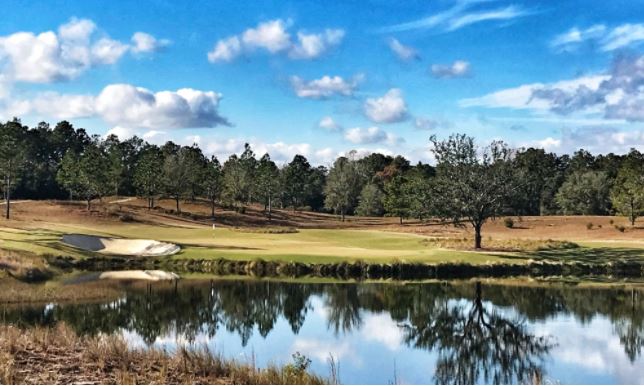
By Eamon Lynch
It’s difficult to imagine two more discordant places than Kiawah Island and Ridgeland, which are separated by so much more than the 90-minute drive on US-17 through the backwoods of South Carolina. The famed barrier island is home to an upscale resort, to real estate listings with two commas in the asking price, and to the most recent PGA Championship, won last month by Phil Mickelson. Ridgeland is … well, not.
Ridgeland is the seat of Jasper County, one of the poorest districts in the nation, but it’s where you’ll find a new kind of golf philanthropy. It’s also where you’ll find the PGA Tour for this week’s Palmetto Championship at Congaree, which replaces the RBC Canadian Open, an event canceled by Covid for a second straight year.
Located behind a wooden gate along a two-lane road in the woods, Congaree isn’t a golf club in the conventional sense. There is a course — actually, one of the best that Tom Fazio ever signed his name to — but that is almost incidental.
At Congaree, golf is the route, not the destination. It opened in 2018 and has only two official members — its billionaire founders Dan Friedkin and the late Robert McNair, who owned the Houston Texans. What it has instead are invited ambassadors, people prominent in their industries who aren’t so much expected to pay cash as donate their time and mentorship. Their number includes titans of industry and golf Hall of Famers, like Masters winner Mark O’Meara.
Each year, the Global Golf Initiative at Congaree identifies dozens of high school students from around the world who have the talent to play college golf but who lack the financial, parental or social advantages that kids from places like Kiawah Island might enjoy. The intense four-week program is a mix of educational, vocational and golf instruction, including college preparation, life lessons, counseling, fitness training and even club fitting. When they leave, Congaree’s advisors and counselors shadow them through the end of high school and into college.
“Mr. Friedkin’s vision was for Congaree to bring together like-minded individuals who played golf, loved golf and realized a philanthropic club was a conduit to be able to make a difference in the lives of deserving and underprivileged children,” said Bruce Davidson, a genial former Tour pro from Scotland who is now Congaree’s co-director of golf and, with his colleague John McNeely, the driving force behind the project.
Built on an eighteenth-century rice plantation, Congaree’s collection of whitewashed clapboard buildings includes a schoolhouse that looks plucked from a Laura Ingalls Wilder novel. Inside, its walls bear the photos of dozens of kids who have so far been drawn from around the world. One is a young Irish girl, and when she was chosen to come to Congaree, Davidson got a phone call from her mother. “This has to be a scam, right?” the disbelieving parent asked. “Things like this don’t happen to our family.” Her daughter is now playing golf at an American university.
For some of these kids, Congaree is as much respite from today as it is a promise for tomorrow. Davidson pointed to a photo of an earnest-looking, towheaded boy from the Midwest whose father had taken his own life just two weeks earlier. “We will measure our success in terms of how many lives we can affect positively,” Davidson said. “There’s never been any mention whatsoever of financial return. That’s what differentiates Dan Friedkin from anyone else I’ve ever met.”
Congaree quietly lobbied to host the 2026 Presidents Cup but lost out to Medinah Country Club in Chicago, a venue that makes up in history what it lacks in design interest. It was always a long shot: Presidents Cups tend to land in major metropolitan areas, not places like Jasper County. The PGA Tour’s Palmetto Championship, falling a week before the U.S. Open and featuring multiple-major winners like Dustin Johnson and Brooks Koepka, is a decent consolation prize.
Congaree might be the most interesting course the PGA Tour will touch down at this year, but it deserves a spotlight not merely for its design, the timing of its tournament, or the star wattage of its competitors. Rather, it’s a welcome reminder of golf’s noble tradition of creating educational pathways for those who lack the access that is often the first step to success.







